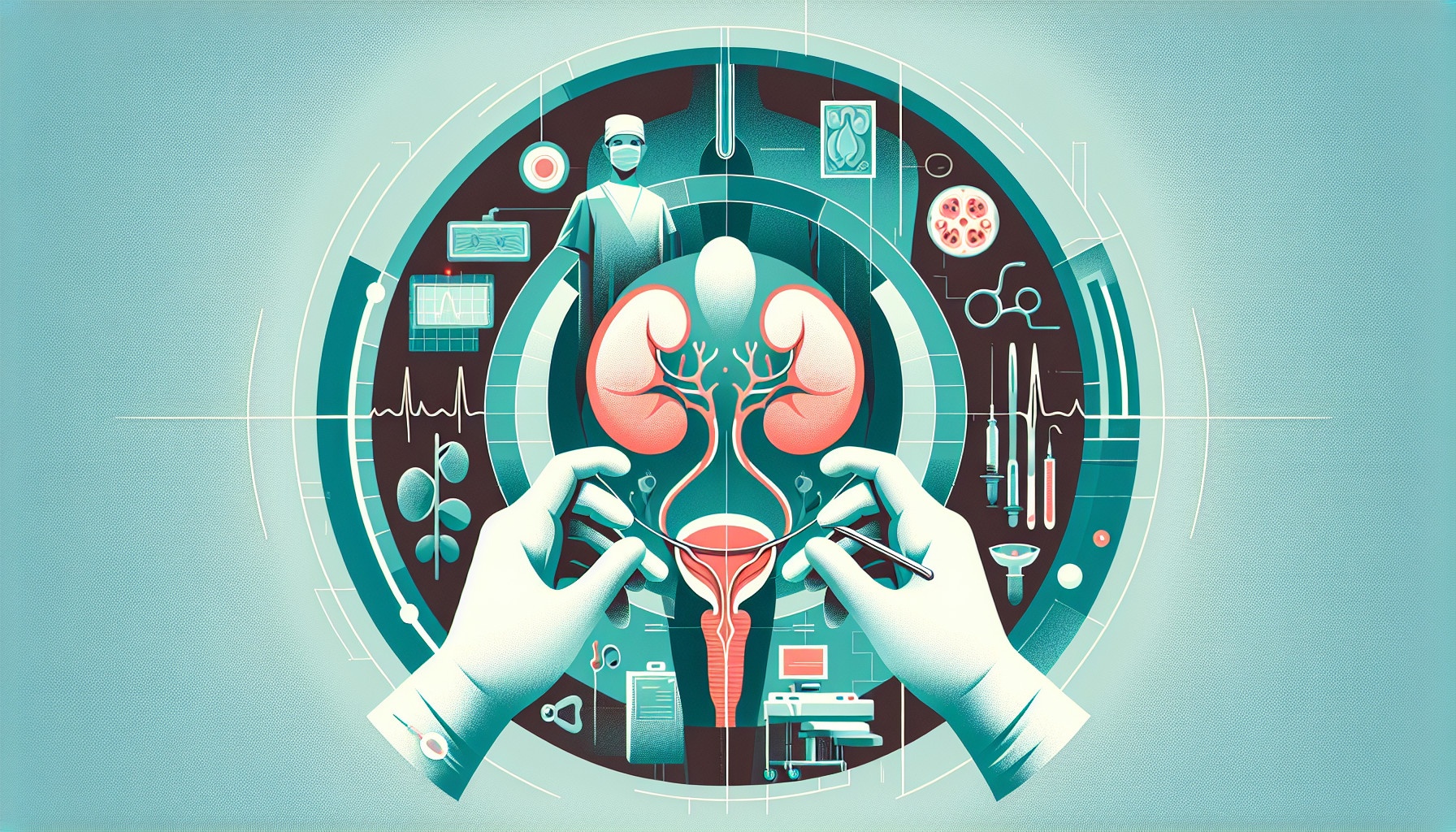Our Summary
The researchers conducted an experiment to improve the safety of two types of hysterectomy surgeries - laparoscopic and robot-assisted, which have potential risks of bladder injury. They aimed to find a new method to clearly see the bladder during these surgeries using a substance called indocyanine green (ICG).
They first tested the method on pig bladders to determine the right amount of ICG needed. After that, they applied the method in surgeries on two patients who had a high risk of bladder injury due to previous operations.
The results showed that the bladder was easier to see when filled with ICG and then washed out with saline. This could be a useful technique to avoid bladder injuries during these types of surgeries.
FAQs
- What was the aim of the researchers’ experiment on bladder surgery?
- What substance did the researchers use to make the bladder more visible during surgery?
- What were the results of the experiment with indocyanine green (ICG) on bladder visibility during surgeries?
Doctor’s Tip
A helpful tip a doctor might tell a patient about bladder surgery is to make sure to follow all pre-operative instructions provided by your healthcare team, such as fasting before surgery and stopping certain medications. Additionally, it is important to discuss any concerns or questions you may have with your surgeon before the procedure. After surgery, be sure to follow all post-operative care instructions, including taking any prescribed medications and attending follow-up appointments. It is also important to listen to your body and report any unusual symptoms or concerns to your healthcare provider promptly.
Suitable For
Patients who are typically recommended bladder surgery include those with bladder cancer, urinary incontinence, bladder stones, interstitial cystitis, bladder diverticulum, and bladder prolapse. Additionally, patients with a high risk of bladder injury during other surgeries, such as hysterectomy, may also be recommended bladder surgery to prevent complications.
Timeline
Before bladder surgery:
- Patient meets with their healthcare provider to discuss the need for surgery and potential risks and benefits
- Patient undergoes pre-operative testing and evaluations to ensure they are healthy enough for surgery
- Patient may be instructed to stop taking certain medications or to follow specific dietary guidelines in preparation for surgery
- Patient may meet with a urologist or other specialists to discuss the specifics of the surgery and what to expect during recovery
After bladder surgery:
- Patient wakes up in the recovery room and is monitored closely for any complications
- Patient may experience pain, discomfort, and difficulty urinating in the days following surgery
- Patient may need to stay in the hospital for a few days for observation and management of pain
- Patient may be discharged with instructions for wound care, medications, and follow-up appointments
- Patient will need to take it easy and avoid strenuous activities for a period of time while they recover
- Patient may need to follow up with their healthcare provider for further testing or evaluation to ensure the surgery was successful.
What to Ask Your Doctor
What are the potential risks and complications associated with bladder surgery?
How will the surgeon ensure that the bladder is protected during the surgery?
What is the success rate of bladder surgeries using the new method of visualizing the bladder with ICG?
How long is the recovery time after bladder surgery?
Are there any alternative treatment options to bladder surgery that should be considered?
What steps can be taken to prevent future bladder injuries after the surgery?
How soon after the surgery can normal activities be resumed?
Will there be any long-term effects on bladder function after the surgery?
What follow-up care or monitoring will be required after the surgery?
Is there a risk of recurrence of bladder issues after the surgery?
Reference
Authors: Yoshida Ueno A, Sato T, Namba T, Kawase F, Komatsu J, Hayashi K. Journal: Asian J Endosc Surg. 2024 Jul;17(3):e13315. doi: 10.1111/ases.13315. PMID: 38689524
